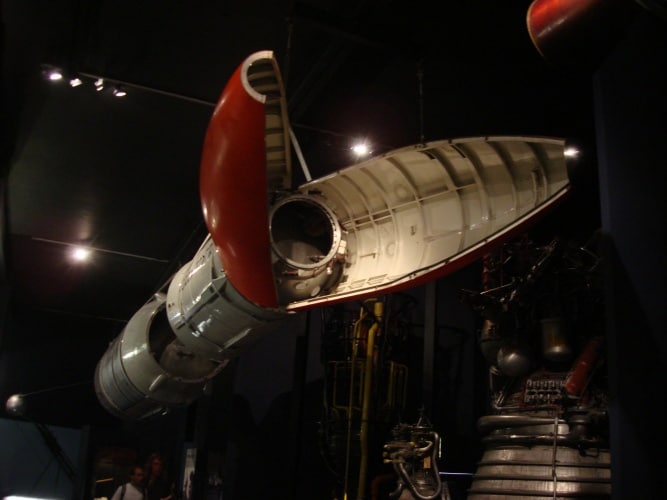Britain holds a slightly ignominious distinction: it’s the only nation to have independently developed the capability to launch objects into orbit and given it up. The decision in the early 1970s to cancel the Black Arrow project, followed by another in the early 1980s that the UK should not participate in the European launcher programme which led to Ariane (and, in parallel, should develop robotic space technology rather than take part in manned missions) have probably contributed more than anything else to the mistaken public perception that the UK ‘doesn’t do space’.

Just how mistaken that perception is was plain to see a couple of weeks ago at the Stevenage facility of Airbus Space and Defence (formerly EADS Astrium), where the expanded Mars Yard was unveiled to the press. Slightly unkindly referred to in many reports as a sandpit, the Yard mimics as closely as possible the conditions which the ExoMars rover, due to be launched to the Red Planet in 2018, will encounter on the Martian surface, including lighting of the same intensity as the sunlight on Mars, gradients similar to those at the landing sites which are currently being selected, and yes, sand and boulders of similar grain size and texture.
The upshot of which is that the UK is designing and building a rover which will investigate the possibility that Mars once held life, and the signs of that could be preserved below the Martian surface protected from the radioactive flux that scours the planet; it’s also building the orbiter that will act as the rover’s communications link. As a little side-plug, anybody attending The Engineer Conference in June will be able to hear rover engineer Abbie Hutty, who is current holder of the IMechE’s Woman Engineer of the Year title, talk about the project and her work on it.
To my thinking, it’s a great shame that those political decisions were taken decades ago. They might have made economic sense at the time — the thinking was that hitching a ride on American launchers would be cheaper than using home-built rockets — but they were surely poor politics. There can be few symbols as potent as a whacking great rocket (go and watch the wide-mouthed wonder of people — especially children — looking at the surviving Black Arrow in the Science Museum if you don’t believe me) and there’s hardly anything so well-placed to attract people into STEM studies and careers as space (apart from dinosaurs, but they don’t have a great deal of engineering link-up).

Whether staying in the launcher sector would have won Britain a slice of the hugely-lucrative but possibly unforeseeable satellite launch market now is a moot point, although if it did, anyone making that decision in the 1970s would now be seen as a buccaneering risk-taking visionary hero. But it would almost certainly have enabled the development of the HOTOL spaceplane project: we could now have the Skylon spaceplane, which is developed from the HOTOL concept but was considerably delayed by Rolls-Royce abandoning the project in the 1980s, as a result of that decision to avoid launchers.
Fortunately it appears that today’s politicians aren’t as cautious and space-averse as those of the past, and space is flourishing — albeit slightly below the radar — in the UK. It’s a multi-billion pound industry that employs tens of thousands, working on everything from telecoms satellites to discovery machines like ExoMars and space telescopes, and has spin-offs in medicine, materials processing and a multitude of other sectors at which even the most cynical, bottom-line-obsessed type couldn’t turn up his or her nose. What better sandpit could anyone ask for?




Nanogenerator consumes CO2 to generate electricity
Whoopee, they've solved how to keep a light on but not a lot else.